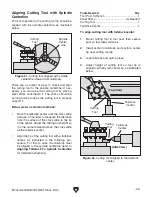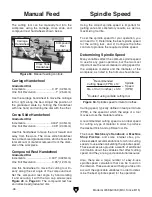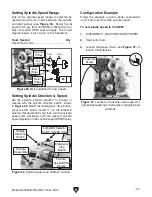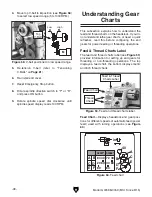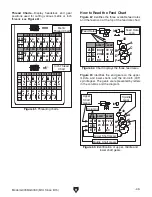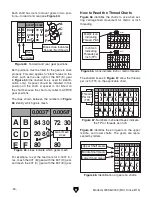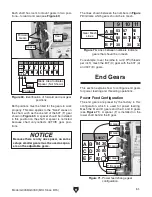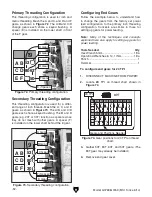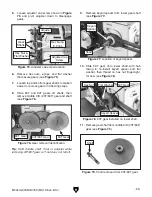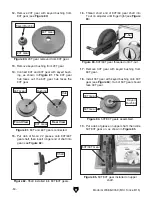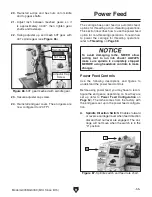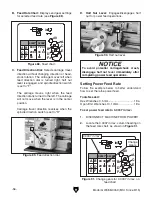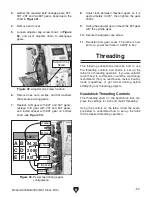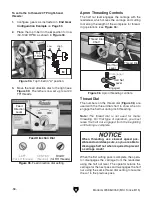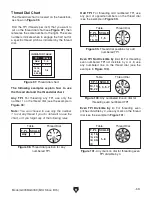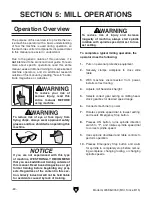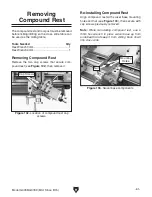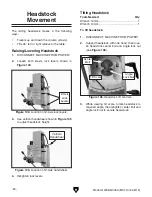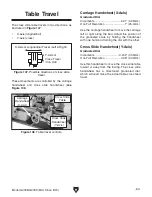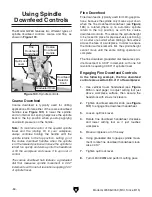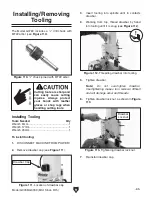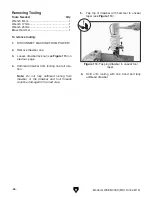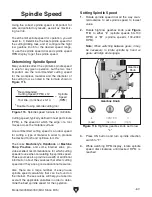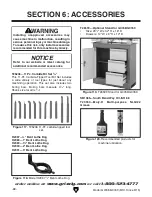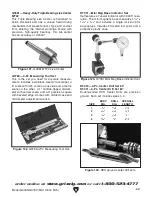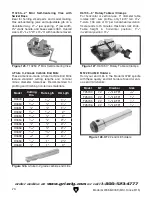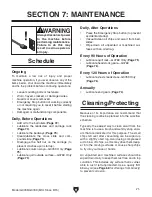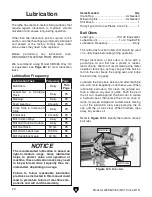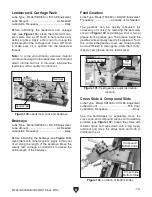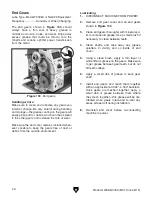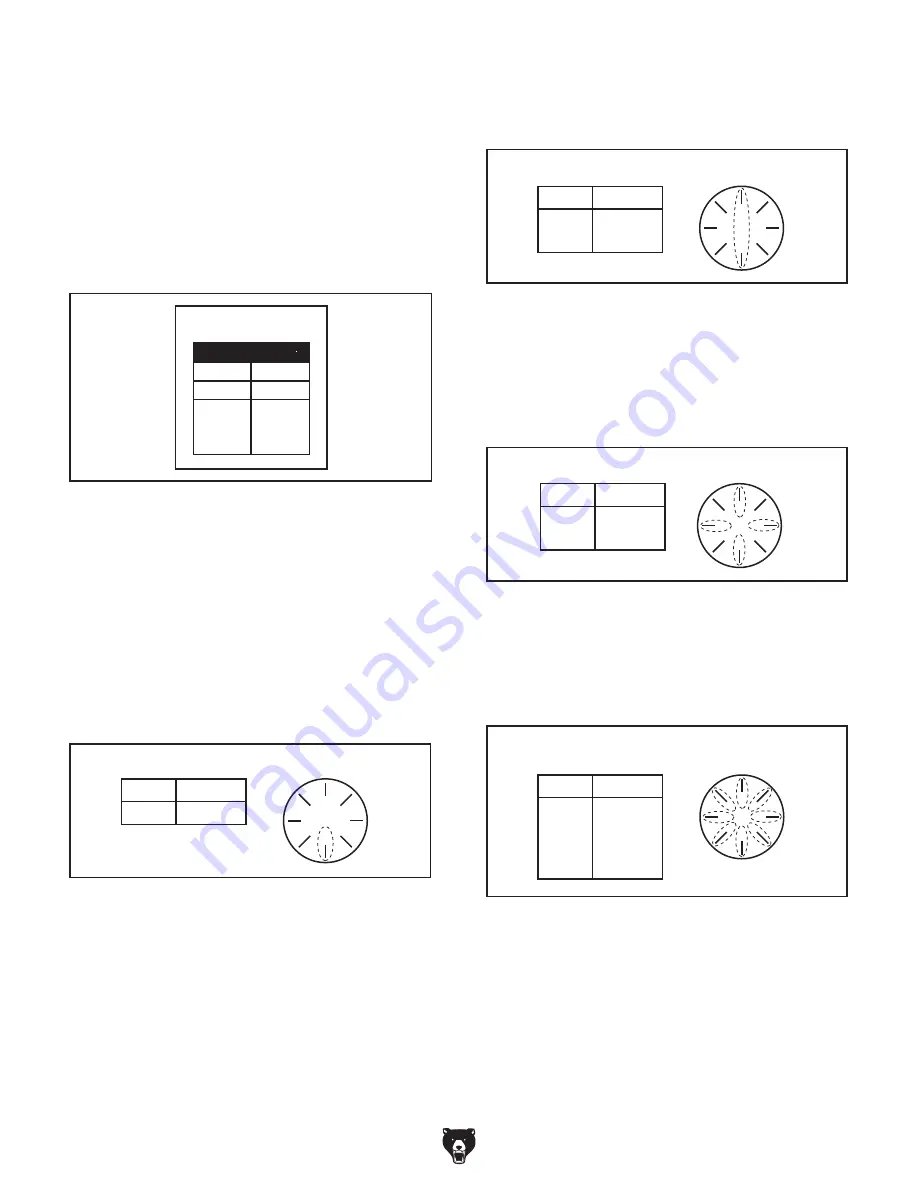
Model G0768/G0769 (Mfd. Since 8/15)
-59-
The following examples explain how to use
the thread dial and the thread dial chart.
Odd TPI: For threading odd numbered TPI, use
any pair of opposite numbers on the thread dial
(see the example in
Figure 99).
T.P.I. SCALE
9, 11,
13, 19
1, 5
Table
Thread Dial
1
3
5
7
Figure 99. Thread dial positions for odd
numbered TPI.
Even TPI Divisible by 4: For threading even
pitches divisible by 4, use any mark on the thread
dial (see the example in
Figure 101).
1
3
5
7
Table
Thread Dial
T.P.I. SCALE
10, 14,
18, 22
1, 3, 5, 7
Figure 100. Any numbered line on dial for
threading even numbered TPI.
Even TPI Not Divisible by 4 or 8: For threading
even numbered TPI not divisible by 4 or 8, use
any numbered line on the thread dial (see the
example in
Figure 100).
Table
Thread Dial
1
3
5
7
T.P.I. SCALE
12, 16,
20, 24,
32, 40,
44
1–8
Figure 101. Any mark on dial for threading even
TPI divisible by 4.
T.P.I. SCALE
Any
1
1
3
5
7
Table
Thread Dial
Figure 98. Thread dial position for any
numbered TPI.
Any TPI: For threading any TPI, use only the
number 1 on the thread dial (see the example in
Figure 98).
Note: You can choose to use only the number
1 to cut any thread if you do not want to use the
chart, or if you forget any of the following rules.
Thread Dial Chart
INDICATOR TABLE
TPI
Odd
Even
12, 16,
20, 24,
32, 40, 44
1, 3, 5, 7
1–8
1, 5
SCALE
Figure 97. Thread dial chart.
The thread dial chart is located on the headstock,
as shown in
Figure 96.
Find the TPI (threads per inch) that you want to
cut on the thread dial chart (see
Figure 97), then
reference the scale number to the right. The scale
numbers indicate when to engage the half nut for
a specific thread pitch as indicated by the thread
dial.

